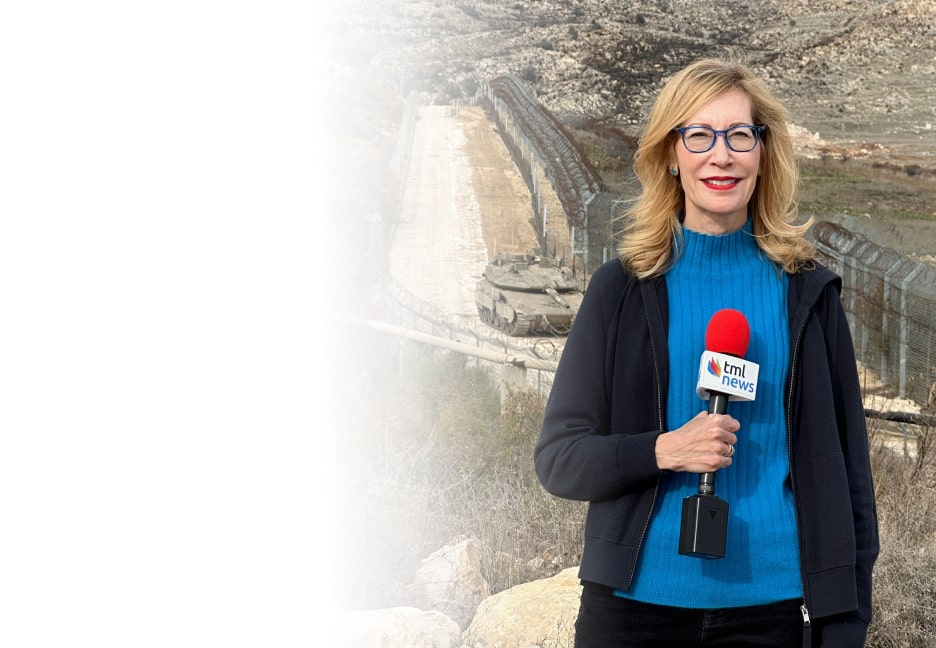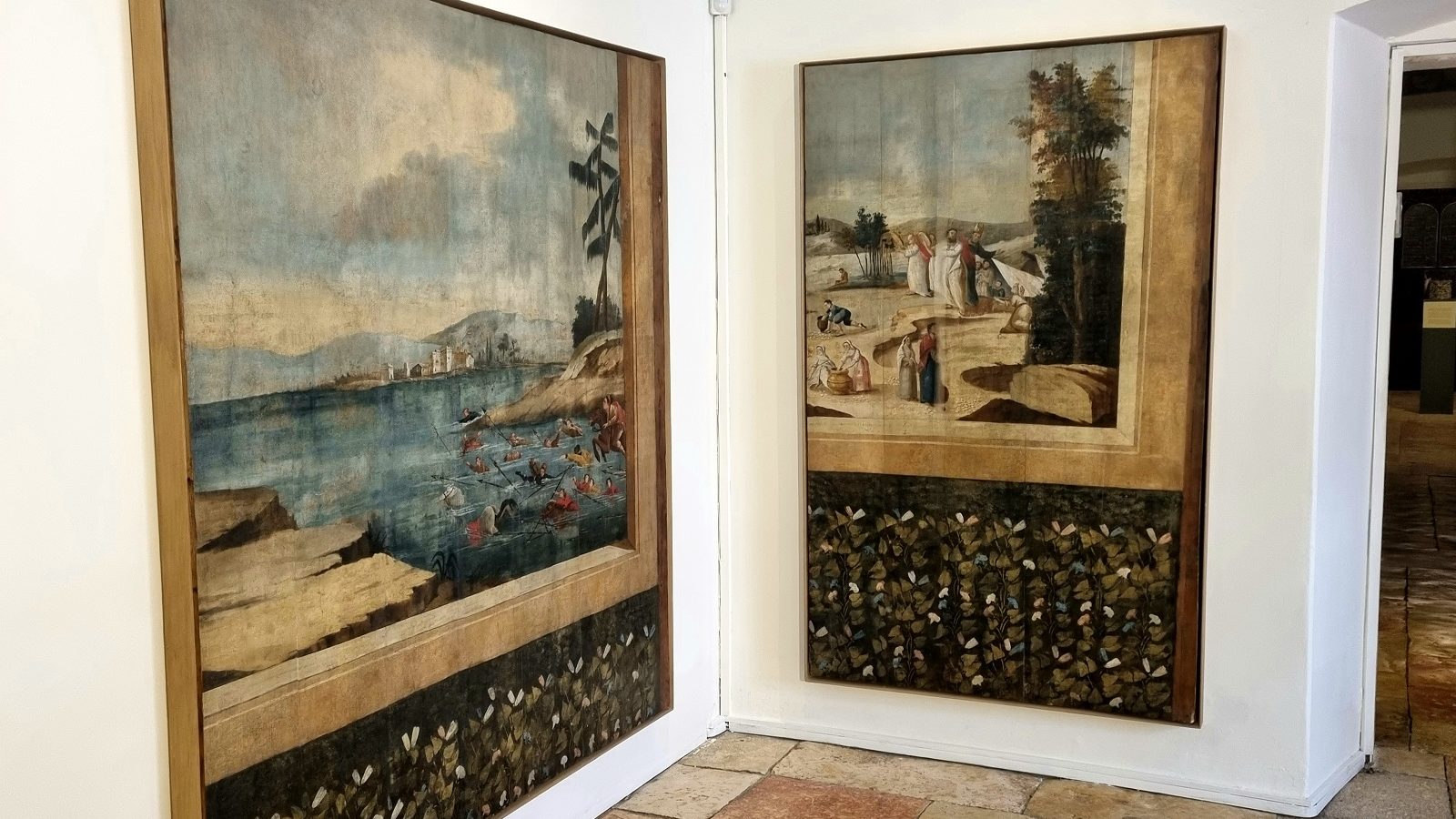Rare 18th Century Italian Sukkah on Display in Jerusalem (VIDEO REPORT)
U. Nahon Museum of Jewish Art preserves Italian heritage as community gathers to celebrate holiday
Inside a small nondescript building in the heart of Jerusalem lies hidden treasure: four painted panels of wood that once made up the sukkah of a wealthy Venetian Jewish family.
A sukkah is a temporary hut or structure built during the weeklong festival of Sukkot, also known as the Feast of Tabernacles, which commemorates the 40 years the ancient Israelites spent wandering in the desert before entering the Promised Land.
It is one of the most important holidays in the Jewish calendar.
The painted sukkah panels, which date back to the late 18th century, are on display in the U. Nahon Museum of Italian Jewish Art and, according to the museum, they are extremely rare.

Detail from one of the four painted sukkah panels from Venice, late 18th century, tempera on wood, gift of the Sullam family in memory of Angelo Raffaele Sullam. (U. Nahon Museum of Italian Jewish Art)
“These were sort of common in the late 16th and 17th centuries into the 18th century, but for various reasons most of them were destroyed or lost,” Daniel Niv, curator of the U. Nahon Museum of Italian Jewish Art, told The Media Line.
“This is actually one of the last surviving [ones] in this condition in the world,” he added.
This holiday season, give to:
Truth and understanding
The Media Line's intrepid correspondents are in Israel, Gaza, Lebanon, Syria and Pakistan providing first-person reporting.
They all said they cover it.
We see it.
We report with just one agenda: the truth.


The panels depict scenes from the Book of Exodus painted in a remarkable trompe l’oeil fashion, as though they were being viewed through a window. From Pharaoh and his soldiers drowning in the Red Sea, to manna falling from heaven, to Moses handing down the Ten Commandments—each panel tells a separate story relating to the holiday of Sukkot.

Detail from one of the four painted sukkah panels from Venice, late 18th century, tempera on wood, gift of the Sullam family in memory of Angelo Raffaele Sullam. (U. Nahon Museum of Italian Jewish Art)
“The [panels] were made by local artists, not necessarily Jewish ones, for a family called Sullam, [which] was a very prominent Venetian family,” Niv explained. “When the Jews lived in ghettoes in Italy, they were very well-integrated with the general Christian population. They formed all sorts of connections with craftsmen and artists, and created these beautiful things.”
Interestingly, the U. Nahon Museum of Italian Jewish Art also houses another historical gem: a spectacular 18th-century synagogue that was last used in Italy in World War I. Decorated with ornate gold wooden sculptures, the synagogue was originally built in Conegliano Veneto, a small village situated not far from Venice. In 1952, it was transported to Israel where it was then reconstructed.
It remains in use to this day.

Inside the 18th-century Italian synagogue, located at U. Nahon Museum of Italian Jewish Art in Jerusalem. (Maya Margit/The Media Line)
The Italian Jewish community dates all the way back to the second century BCE. At the time, they lived mainly in southern Italy, with many residing in Rome, and for the most part, they spoke Greek.
“Italian Jews were in Rome even before the destruction of the Second Jewish Temple,” Astorre Modena, a board member from the Association of Italian Jews in Israel, related to The Media Line.
“At the time, Rome was like New York and where all the business was, so Jews were there,” he said, adding that nowadays there are perhaps 20,000 remaining in all of Italy.
The Italian Jewish community views itself as distinct from either Ashkenazi or Sephardi Jews, with unique customs and foods.
Each year on the eve of Sukkot, members gather in Jerusalem to build a sukkah and pray.

Members of Jerusalem’s Italian Jewish community build a sukkah ahead of the holiday, Sept. 20, 2021. (Maya Margit/The Media Line)
“It’s not a big community,” Modena affirmed. “We’re talking about up to 10,000 or so [people] all over Israel. They’re very assimilated into Israeli society.”
Despite their small size, the festival of Sukkot provides the community with a chance to meet, pray and pass on ancient traditions to the next generation.
The Venetian sukkah panels will remain on display at the U. Nahon Museum of Italian Jewish Art until the end of Sukkot, after which they will be temporarily taken down for conservation purposes.

